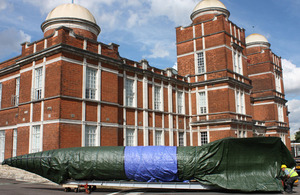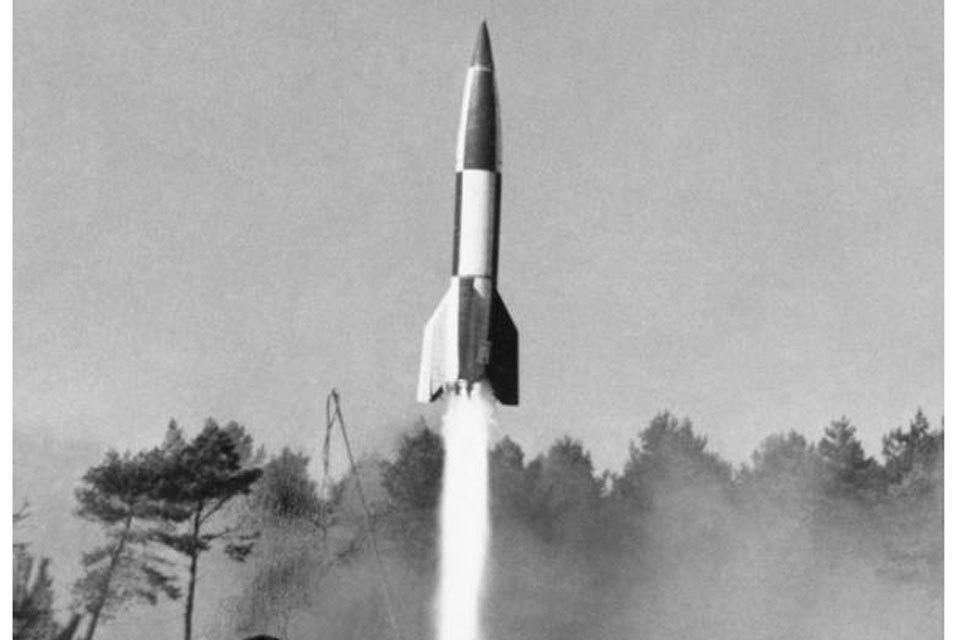German rocket lands in Medway
At the height of the Second World War the German High Command would have been delighted to land a V2 rocket in the heart of Medway's military estate, but this week the delight was all Medway's as it welcomed this extremely rare and valuable piece of world history.

This V2 rocket captured in the Netherlands at the end of the Second World War is to be displayed at the the Royal Engineers Museum, Gillingham [Picture: Crown Copyright/MOD 2012]
The Royal Engineers Museum, Gillingham, this week took receipt of one of only a handful of surviving V2 rockets in the country. The V2 was a Nazi weapon of fear which rained destruction on Britain and ultimately gave birth to the space age.
Measuring over 14 metres in length and three-and-a-half metres in width, the enormous rocket has just been restored after spending decades exposed to little more than the elements at the nearby Defence Explosive Munitions and Search School.
Deputy Curator Catherine Byrne said:
It’s really exciting to see this rocket restored and on display to the general public for the first time, this is an extremely significant exhibit.
The restoration of the V2 has been a delicate and expensive process costing in the region of £100,000, but the finished project is not just of almost inestimable commercial value but is also of extreme cultural significance.
Designed by Wernher Von Braun, the V2 was the first long-range combat ballistic missile, the first known man-made object in space, and is the progenitor of all modern rockets, including those used in the Soviet and US space programmes.

The V2 was the first long-range combat ballistic missile and the first known man-made object in space (library image) [Picture: Imperial War Museum]
This particular example was captured in the Netherlands following the chaos of the German retreat.
The Germans had intended to destroy all known V2 rockets to prevent the advanced technology from falling into enemy hands, but a rare few survived and were closely studied by the allies.
At this stage in the War, Von Braun was one of a number of scientists who surrendered to the Americans to avoid capture by the Russians or execution by the Nazis.
He went on to develop the Saturn V booster rocket that helped land the first men on the moon.
An estimated 2,754 civilians were killed in London alone by V2 attacks with a further 6,523 injured. Slave labour from concentration camps was used in the construction of the V2s and so harsh were conditions it is believed more people died in this process than were killed by the rockets themselves.
The V2 rockets were notorious not only for their extremely long range and accuracy but for the fact that they fell silently from the sky offering no warning.